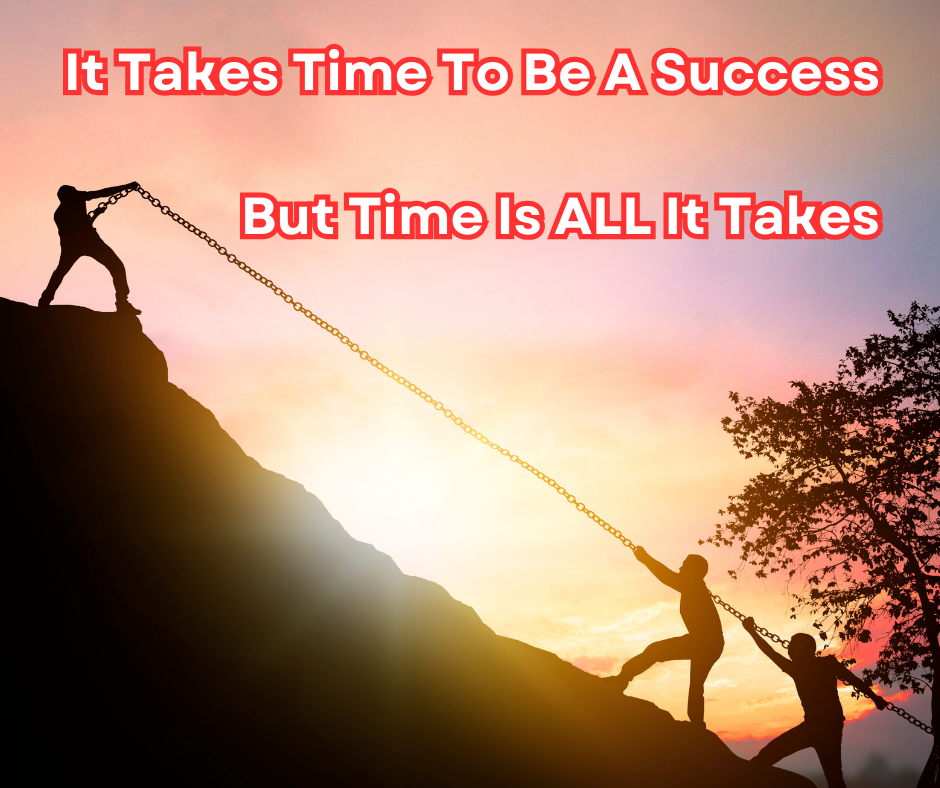How To Cultivate A Present Moment Mindset
In a world that seems to constantly demand our attention and pull us in a million different directions, it can be easy to lose sight of the present moment. Our minds are often racing with thoughts about the past or worries about the future, leaving little room for us to fully experience and appreciate the here and now. This is where the practice of mindfulness comes in. Mindfulness is the act of being fully present and engaged in the moment, without judgment or distraction. It involves paying attention to our thoughts, feelings, and sensations in a non-reactive way, and allows us to cultivate a sense of awareness and inner peace.
So whilst being constantly bombarded with notifications and distractions, cultivating a Present Moment Mindset is more important than ever. By learning to be present and truly engage with the world around us, we can reduce stress, improve our focus and concentration, and enhance our overall well-being.
Beginning Your Journey to a Present Moment Mindset
Living in the present moment can transform your life. It allows you to fully experience each day, rather than being caught up in worries about the past or future. The journey to cultivating a present moment mindset begins with understanding its power and the techniques that can help you get there.
The Power of Now
The concept of “The Power of Now” emphasizes the importance of focusing on the present rather than dwelling on the past or worrying about the future. When you focus on the now, you open yourself to a wealth of experiences and insights that might otherwise go unnoticed. This mindset can lead to greater peace, clarity, and fulfillment.
One way to harness this power is through mindfulness, a practice that involves paying attention to the present moment without judgment. Mindfulness can be cultivated through various techniques, including meditation, breathing exercises, and mindful living practices.
Recognizing Distraction Triggers
In our fast-paced world, distractions are everywhere. Recognizing what pulls your attention away from the present is crucial in developing a present moment mindset. Common distractions include technology, noise, and even your own thoughts. By identifying these triggers, you can take steps to minimize their impact.
Consider keeping a journal to track when and why you become distracted. This practice can help you identify patterns and make adjustments to your environment or habits to better support mindfulness.
Benefits of Living in the Moment
Living in the moment offers numerous benefits for your mental and physical health. It can reduce stress and anxiety by helping you focus on what’s happening right now, rather than worrying about the future or ruminating on the past. This shift in focus can lead to a calmer mind and a more peaceful life.
Moreover, being present enhances your relationships. When you fully engage with others, you listen more intently and respond more thoughtfully, strengthening your connections. Additionally, mindfulness can improve your concentration and creativity, as you’re less likely to be bogged down by irrelevant thoughts or distractions.

Practical Steps for Mindfulness
Now that we’ve explored the benefits and challenges of living in the moment, let’s delve into some practical steps to cultivate a present moment mindset. These techniques can help anchor you in the present and enhance your overall well-being.
Cultivating a Breathing Practice
One of the simplest and most effective ways to practice mindfulness is through deep breathing exercises. Focusing on your breath can help ground you in the present moment and calm your mind. Try the following steps:
- Find a quiet place where you won’t be disturbed.
- Sit or lie down in a comfortable position.
- Close your eyes and take a deep breath in through your nose, filling your lungs completely.
- Hold your breath for a moment, then slowly exhale through your mouth.
- Repeat this process for several minutes, paying attention to the sensation of your breath entering and leaving your body.
Regular practice of deep breathing can help you manage stress and enhance your ability to stay present throughout the day.
The Role of Journaling in Mindful Living
Journaling is a powerful tool for cultivating mindfulness. By regularly writing down your thoughts and feelings, you can become more aware of your internal state and the factors that influence your mood and behavior. This practice encourages self-reflection and helps you identify patterns that may be hindering your ability to stay present.
To start a mindfulness journal, dedicate a few minutes each day to jot down your experiences, emotions, and thoughts. Focus on specific moments when you felt present or distracted, and explore what contributed to those feelings. Over time, your journal will become a valuable resource for understanding yourself better and making positive changes in your life.
Incorporating A Present Moment Mindset in Everyday Activities
Mindfulness isn’t limited to meditation or breathing exercises. You can integrate it into your daily activities, turning mundane tasks into opportunities for present-moment awareness. By being mindful during everyday activities, you can enhance your focus and enjoyment of life.
Start by choosing one activity to practice mindfulness each day. It could be brushing your teeth, washing the dishes, or even walking to the bus stop. The key is to pay attention to the sensations, sights, and sounds around you, without letting your mind wander.
- Notice the texture of the toothbrush bristles as they clean your teeth.
- Feel the warmth of the water as you wash the dishes.
- Listen to the sounds of nature as you walk.
Awareness While Eating
Eating is a perfect opportunity to practice mindfulness. Instead of rushing through meals or multitasking, take the time to savor each bite. Pay attention to the flavors, textures, and aromas of your food. Chew slowly and appreciate the nourishment you’re providing your body.
Mindful Commuting
Whether you’re driving, biking, or taking public transport, commuting can be an opportunity for mindfulness. Focus on the sights and sounds around you, and notice how your body feels as you move. If you’re driving, pay attention to the sensation of the steering wheel in your hands and the sound of the engine. This practice can transform a routine activity into a calming experience.
Present Moment Mindset Focus During Conversations
Engaging fully in conversations is another way to practice mindfulness. When speaking with someone, give them your undivided attention. Listen actively, without planning your response or letting your mind wander. By doing so, you create deeper connections and demonstrate respect for the person you’re speaking with.
Most importantly, being present in conversations allows you to respond more thoughtfully and genuinely, improving your relationships and communication skills. For more insights on how to enhance your presence, check out this guide on how to stay in the present moment.
How to Overcome Present Moment Mindset Challenges
While cultivating a present moment mindset is rewarding, it can also be challenging. Common obstacles include overthinking, multitasking, and procrastination. Fortunately, with patience and practice, these challenges can be overcome.
Dealing with Overthinking
Overthinking is a common barrier to mindfulness. When your mind is constantly racing, it can be difficult to focus on the present. To counteract this, try grounding techniques like deep breathing or focusing on your senses.
“When you find yourself overthinking, pause and take a few deep breaths. Notice the sensation of your feet on the ground and the air on your skin. This simple practice can help bring you back to the present moment.”
Additionally, practice self-compassion and remind yourself that it’s okay to let go of thoughts that don’t serve you.
Minimizing Multitasking
Multitasking is often seen as a productivity booster, but it can actually hinder your ability to be present. When you divide your attention among multiple tasks, you’re less likely to fully engage with any of them. To minimize multitasking, prioritize your tasks and focus on completing one thing at a time.
Consider using a timer to set specific periods for focused work, followed by short breaks. This technique, known as the Pomodoro Technique, can help you maintain concentration and stay present throughout the day.
- Set a timer for 25 minutes and work on a single task.
- Take a 5-minute break to rest and recharge.
- Repeat the process, taking a longer break after every four sessions.
Conquering Procrastination
Procrastination is another common challenge that can prevent you from living in the moment. It often stems from fear or uncertainty about a task. To overcome procrastination, break tasks into smaller, manageable steps and set specific goals for each day.
Mindfulness Benefits for Mental and Physical Health
Practicing mindfulness offers a wide range of benefits for both mental and physical health. By staying present, you can reduce stress, improve concentration, and enhance emotional well-being.
One of the most significant benefits of mindfulness is its ability to reduce stress and anxiety. When you’re focused on the present, you’re less likely to be consumed by worries about the future or regrets about the past. This shift in focus can lead to a calmer mind and a more peaceful life.
- Mindfulness can lower cortisol levels, the hormone associated with stress.
- It can also improve your ability to manage difficult emotions and situations.
Reducing Stress and Anxiety
Mindfulness techniques, such as deep breathing and meditation, can help reduce stress and anxiety by calming the mind and promoting relaxation. These practices encourage you to focus on the present moment, rather than getting caught up in anxious thoughts.
Research has shown that mindfulness can decrease symptoms of anxiety and depression, making it a valuable tool for improving mental health.
Improving Concentration and Focus
Mindfulness can also enhance your concentration and focus. By training your mind to stay present, you’re less likely to be distracted by irrelevant thoughts or external stimuli. This increased focus can improve your productivity and performance in various areas of life.
To practice mindfulness for concentration, try incorporating short meditation sessions into your daily routine. Even just a few minutes of focused breathing or body scanning can make a significant difference in your ability to concentrate.
Enhancing Emotional Well-being
Mindfulness plays a crucial role in enhancing emotional well-being. By encouraging you to stay present, mindfulness helps you become more aware of your emotions and reactions. This awareness allows you to respond to situations more thoughtfully, rather than reacting impulsively. As a result, you can develop greater emotional resilience and stability.
Moreover, mindfulness encourages self-compassion and acceptance. By acknowledging your emotions without judgment, you can cultivate a healthier relationship with yourself and others. This practice can lead to improved emotional regulation and a more balanced, fulfilling life.
Personal Growth Through Mindfulness
Mindfulness is not just about reducing stress; it’s also a pathway to personal growth. By cultivating a present moment mindset, you open yourself up to a deeper understanding of yourself and the world around you.
Increased Self-awareness
Mindfulness enhances self-awareness by encouraging you to observe your thoughts and feelings without judgment. This practice helps you identify patterns and triggers, leading to a better understanding of your behaviors and choices.
Developing Empathy and Compassion
As you become more aware of your own experiences, you also become more attuned to the experiences of others. Mindfulness fosters empathy and compassion by helping you see things from different perspectives.
For instance, when you’re fully present in a conversation, you’re more likely to pick up on subtle cues and emotions, allowing you to respond with kindness and understanding.
Empathy and compassion are essential for building strong relationships and creating a supportive community. By practicing mindfulness, you contribute to a more compassionate and connected world.
Boost in Creativity and Problem-Solving
Mindfulness can also boost creativity and problem-solving skills. By clearing your mind of distractions, you create space for new ideas and insights to emerge. This can lead to more innovative solutions and creative breakthroughs.
When you’re present, you’re more likely to approach challenges with an open mind and a fresh perspective. This openness allows you to see possibilities that you might have otherwise overlooked.
Frequently Asked Questions About A Present Moment Mindset
Mindfulness is a journey, and questions are a natural part of the process. Here are some common questions and answers to guide you on your path to mindfulness.
How can mindfulness help reduce anxiety?
Mindfulness helps reduce anxiety by shifting your focus from worrying about the future to experiencing the present moment. This shift in focus can decrease anxiety levels and promote a sense of calm.
By practicing mindfulness, you learn to observe your thoughts without getting caught up in them. This practice helps you detach from anxious thoughts and reduces their power over you.
“Mindfulness is about being fully awake in our lives. It is about perceiving the exquisite vividness of each moment.” – Jon Kabat-Zinn
What is the most effective way to start practicing mindfulness?
The most effective way to start practicing mindfulness is to begin with small, manageable steps. Start with a few minutes of mindfulness meditation each day and gradually increase the duration as you become more comfortable.
You can also incorporate mindfulness into your daily activities, such as eating, walking, or brushing your teeth. The key is to be fully present and engaged in whatever you’re doing.
Can children benefit from mindfulness exercises?
Absolutely! Children can benefit greatly from mindfulness exercises. These practices help them develop focus, emotional regulation, and resilience.
Simple exercises, such as mindful breathing or body scans, can be adapted for children. These practices can be a fun and engaging way to introduce mindfulness to young minds.
- Mindful breathing: Encourage children to take deep breaths and pay attention to how their body feels.
- Body scan: Guide children through a gentle exploration of how each part of their body feels.
- Mindful listening: Have children listen to sounds around them and describe what they hear.
These exercises not only promote a present moment mindset, but also foster a sense of curiosity and wonder in children.
How often should I practice mindfulness?
Consistency is key when it comes to mindfulness. Aim to practice mindfulness daily, even if it’s just for a few minutes. The more you practice, the more natural it will become.
Over time, you’ll find that mindfulness becomes a part of your everyday life, and you’ll start to experience its benefits more fully.
Are there any tools to help maintain a daily mindfulness practice?
Yes, there are many tools available to support your present moment mindset practice. Mindfulness apps, such as Headspace or Calm, offer guided meditations and reminders to help you stay on track.
Setting up mindfulness reminders on your phone or calendar can also be a helpful way to ensure you practice regularly. Additionally, joining a mindfulness group or community can provide support and accountability.
Key Takeaways About A Present Moment Mindset
- Practicing mindfulness helps reduce stress and anxiety, promoting overall well-being.
- Techniques like deep breathing and body scans can anchor you in the present moment.
- Mindful activities, such as walking or eating, enhance focus and appreciation of daily life.
- Tools like mindfulness apps and journals can support a consistent practice.
- Overcoming challenges like overthinking and multitasking requires patience and practice.

You’re not the only one who finds it difficult to cultivate and maintain a Present Moment Mindset. Many people experience self-doubt or insecurity from time to time. Give up allowing self-doubt, fear and inferiority complexes to control your behavior. It’s time to realize your full potential and take charge of your present moment right now. Please go to “The Art of Reinventing Yourself” and start your journey today.














